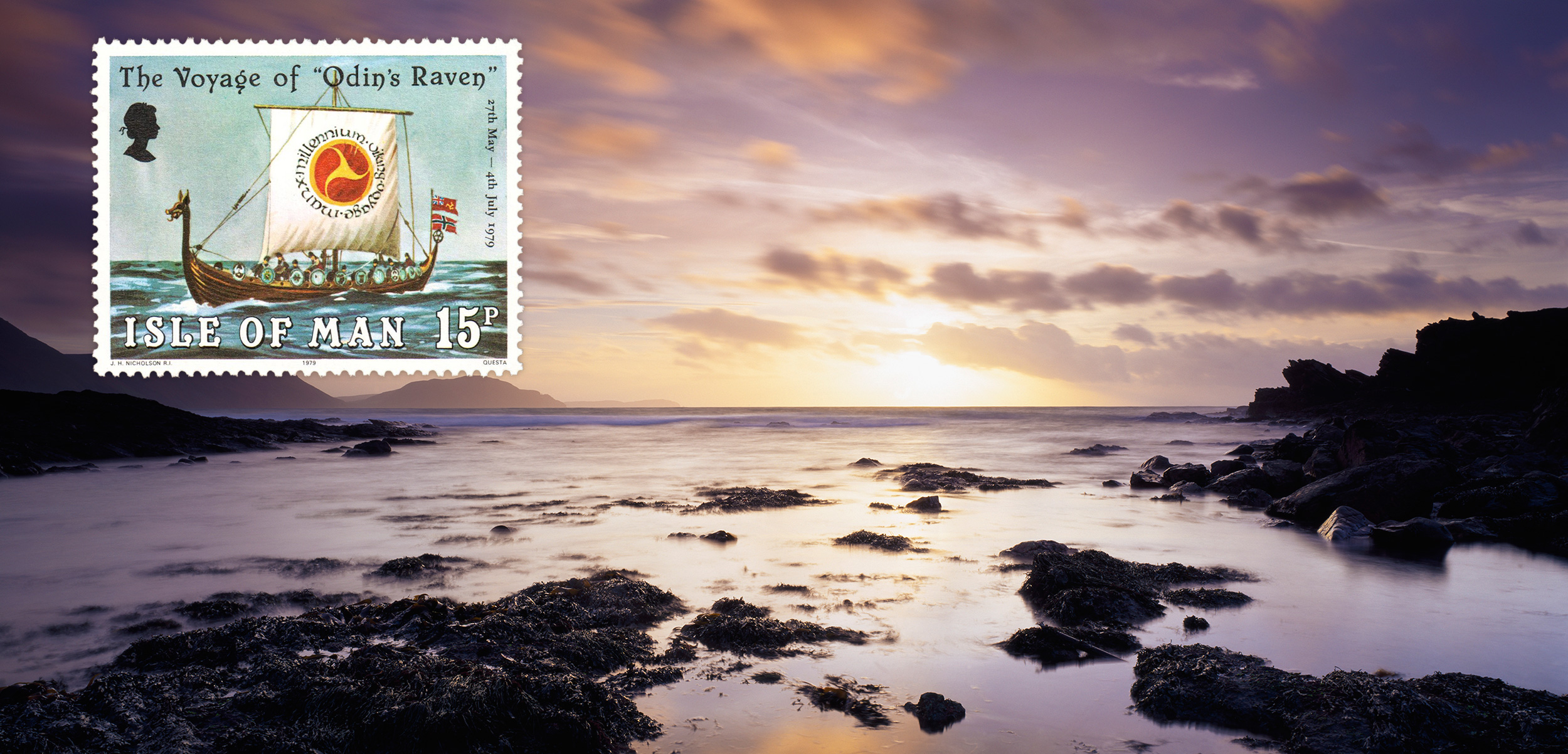A Modern-Day Viking Voyage
Celebrating the world’s longest-running parliament in style.
Article body copy
Postage stamps are lessons in history, politics, science, or geography packed onto a small piece of gummed paper. They’re also beautiful works of art. In Stamped we’re going coastal, with postal.
What would constitute the ideal endurance training for modern men preparing to embark on a Viking-style sea voyage? Nothing short of spending a winter jumping into cold water—and doing so naked. That’s how 16 men from Norway and the Isle of Man prepared to sail nearly 2,500 kilometers across the North Sea in Odin’s Raven, a replica Viking longship.
The 1979 expedition was conceived as a celebration of a thing, but not just any old thing. Tynwald, thingvollr in Old Norse (meaning assembly field), is the longest-running parliament—and yes, often referred to as the “thing”—in the world. Established by Vikings, the parliament has gathered every summer for more than 1,000 years on the four-tiered, man-made Tynwald Mount on the Isle of Man to do a reading, in Manx and English, of laws passed in the previous 12 months.
With Tynwald millennial celebrations a year out, Robin Bigland, a descendant of the Vikings, put an ad in a local newspaper. “Does the Viking spirit live?” he asked, calling on readers to help him celebrate Tynwald with what he thought was the most Viking thing to do: cross the sea in a replica Viking ship. The response was enthusiastic. Within a year, Odin’s Raven was financed by supporters and hand-built by a family of shipbuilders with input from the man responsible for constructing the fleet for the 1958 film The Vikings.
The crew set sail on May 27, 1979, from Trondheim, Norway, but about 50 kilometers into their journey, they came across a Norwegian fishing boat and were informed they were heading right for a storm. They sailed to the Shetland Islands and once the storm passed, they set off successfully, although the journey proved treacherous. “With no escort vessel and in adverse weather, it was very easy to be driven onto the rocks,” says Bigland. “It was very dangerous.” Almost six weeks later—after a tense crossing that included a capsizing off the Isle of Skye—they landed on a beach in the Manx town of Peel. A cheering crowd of about 20,000 was waiting for them.
To celebrate the sailing, the Isle of Man Post Office produced a commemorative stamp and the crew took some first-day covers on the voyage. A few first-day covers were damaged in the capsizing, but that didn’t prevent them from becoming treasured collectibles among philatelists.

